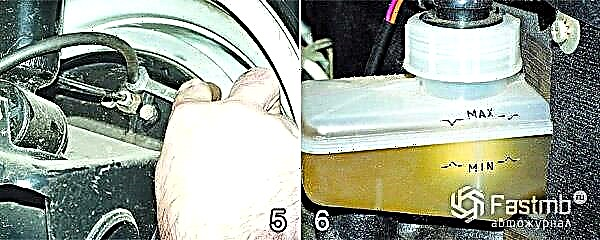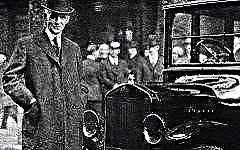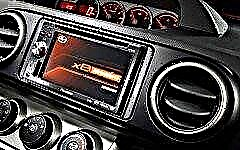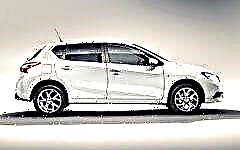

The content of the article:
- Invention in response to audacity
- Ask the owner
- Beginning of the End
- Afterword
June 1956 was a tragic day for many American motorists - the last car rolled off the Packard assembly line. Although a few years later, models called Studebaker-Packard were released, in fact, they no longer had anything to do with the legendary automaker.
The origins, the golden age and the rapid collapse of one of the most eminent American carmakers - in the next review.
Invention in response to audacity

James Ward Packard, unlike many creators of car brands, did not go through hardships to the stars, getting out of poverty to the top of Parnassus. He grew up in a wealthy family and attended the prestigious Lehigh College, where he showed a talent for handling the energy of electricity.
For example, tired of having to constantly get up off the couch to open a window in his dorm room, he equipped it with an "electric drive" so that it would open itself. For the 19th century, this seemed like a true miracle and glorified the young student.
After graduation, James Packard did what he did best - he started selling lamps and other electrical goods. The business was going well, and he decided to buy a car for the family.
The copy he bought from one of the pioneers of the American automotive industry, Alexander Winton, turned out to be miserable and unproductive - low speed, constant overheating of the engine, weak, fragile structure, which led to the need to transport the car to the house in tow.
The next day, an outraged Packard went to return the car back, and at the same time made a scandal to its manufacturer. For all the claims, he heard an offer to make a good car himself.
Perhaps, to some, the remark would have seemed impudent or offensive, while Packard perceived it as an incentive to action. Having lured a couple of engineers from the same Winton, in less than a year he assembled his first car, instantly purchased from him by a local entrepreneur.
The reason for this phenomenal success was that the device, unlike all its competitors, started up the first time, easily overcome road bumps and hills, and was also amazingly reliable.
It was on handling and reliability that Packard focused on, demonstrating his car at the New York Auto Show. And he showed his creation so confidently that the most eminent American families - the Rockefellers and Honivells, without hesitation, bought three cars from him at once.
Ask the owner

After advertising received from the richest people in America, Packard's small project unexpectedly moved to a new stage of development. The company expanded, there was no end of clients, and the owner, who was not in poverty, now became a truly wealthy person. And just on the wave of success, love crept up to him.
Inveterate 40-year-old bachelor James Packard got married and completely retired, leaving his business in the hands of a companion. After himself, he left only the brand's motto, vividly showing the uncompromising and daring character of the founding father. When asked by one of the potential buyers to send brochures with models of the Packard company, he replied that there is no point in evaluating the quality of the car from the brochure, you need to ask the owners about this. “Ask the man who owns one” was the core philosophy of the Packard brand until the fall of the automaker.
Production, frankly speaking, only benefited from the president's departure. He was so worried about the reliability of his cars, to which he owed his fame, that he categorically rejected any experimentation and technical innovation. He feared the new multi-cylinder engines because of the complexity of their design, which could cause malfunctions and thereby damage the company's reputation.
Now, on the produced models, it was possible to fearlessly install 4-cylinder 24-horsepower engines, which came complete with a 4-speed gearbox. Upgraded in this way, the Packard K began to cost a fantastically expensive $ 7,000, although its quality was worth every penny invested.
Packard became a truly premium brand in 1915, after just 6 years of its existence. It was from its assembly line that the country's first car with a 12-cylinder engine, developed by plant engineer Jess Vincent, rolled off.
The unit boasted phenomenally quiet operation with impressive acceleration up to 120 km / h. This powertrain has lifted the automaker to unattainable heights, even in the luxury model category. Now only the 12-cylinder Packard wanted to move the heads of state and businessmen, show business stars and gangsters, it was in the garages of Nicholas II, the Spanish king Alfonso, the American president Harding.
He also left a sad mark in history - it was on this model that the Belgian royal couple crashed to death when King Leopold began to study the map at the wheel and lost control.
Beginning of the End

The Great Depression was an ordeal for the entire American industry: the stock market collapsed, banks closed, automakers went bankrupt. America overnight lost no less than a dozen different car brands, including the luxurious Duesenberg, followed by the Peerless, the Pierce Arrow lasted a little longer, and even the indestructible Cadillac was in excitement.
Packard tried hard to stay afloat, but quickly realized that no one needed premium machines in this situation. Then a team of engineers designed a model under the index 120, which became the little savior of a large concern.
True, with a 3-meter wheelbase, the car could hardly be called small, especially with an inline-eight under the hood. The cost became attractive, which, with the highest level of finish and equipment, was only $ 980 - 2.5 times lower than a similar premium model.
Those car enthusiasts who only dreamed of Packard rushed to the showrooms for the purchase of new items. The car became an absolute hit and, together with the younger, even more compact "sister" under the index 110, helped the company survive the crisis.
The collapse of the legendary automaker seems all the more shocking because the period of the Second World War was truly golden for him. Thanks to the contract for the licensed manufacture of Rolls-RoyceMerlin aircraft engines, the company has enriched itself so much that it could comfortably rest on its laurels for several more decades.
There are several reasons for the decline in interest in the brand:
Exposing a dream
The reorientation of production to more budgetary models cannot be called otherwise. On the one hand, in the post-war years there was a shortage of transport, and people were happy with any cars.
On the other hand, again cities were rebuilding and needed the simplest things, not fancy cars.
But, thirdly, when cars, shrouded in a veil of luxury and fame, these standards of wealth and dreams, suddenly became simple and accessible, they ceased to attract the interest of motorists.
Pregnant hippo
In an effort to keep the size and power at the same time, and at the same time to make the cars budget and simpler led to a strange design. The Clipper, for example, earned the offensive moniker of a pregnant hippo for its spacious tub on wheels. And quite a nice model of 1950, somewhat reminiscent of the Soviet "Victory", in order to reduce the cost had weaker technical characteristics compared to competitors, including the productivity of the power unit.
Mergers and acquisitions
Almost simultaneously, two events occurred that led to serious financial losses: Packard acquired the Studebaker plant in a deep financial hole, and Chrysler at the same time took over the Briggs Manufacturing plant, which supplied bodies for Packard cars. I had to spend resources in several directions at once - on the restoration of one of the oldest car factories and on the device of our own body shop. As a result, the financial position of the company was shaken, and the quality of the bodies of the newly released models never met the previously established high standards.
All subsequent actions were only agony: the loss of a large proportion of the clientele due to the abandonment of the long wheelbase chassis, which were required for hearses and limousines, and attempts to release more new models that had an unfinished technical part.
Afterword

Until now, disputes among auto experts and simply history buffs regarding the "life and death" of a unique brand do not subside. Either the Studebaker squeezed all the forces out of Packard and actually sank it, or the Packard management made fatal managerial steps and did not take advantage of the stable popularity of Studebaker to increase its production.
Or maybe the manufacturer, contrary to logic, should not have been caving in under the changed car market after the war, not holding on to an old reputation, but doing something fundamentally new - for example, stunning the elite audience with a 12 or 16-cylinder supercar.
In the memory of motorists around the world, Packard will remain in the splendor of its luxury, in the splendor of polished chrome and the aura of beautiful life thanks to the historical figures who owned these cars.
The extraordinary stylistics of the American manufacturer contributed to the creations of Mercury and Lincoln, as well as to the domestic ZIL and Chaika. It was Packard that was the first among American concerns in the distant 1949 to develop a simple, reliable, automatic transmission called the Ultramatic Drive. Its 8-cylinder powertrains have remained the benchmark for quality and durability for many years, and their performance has even made them suitable for motorsport.
Initially, whether the company was doomed or not, it still left an indelible mark not only in the American, but also in the world automobile annals.











